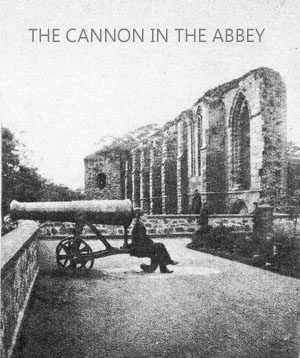
HOME





HOME
|

|

|

|

|
|
P R O F I L E |
||||
|
  CRIMEAN CANNONS - WHERE ARE THEY NOW?
CRIMEAN CANNONS - WHERE ARE THEY NOW?Dunfermline Fife Scotland KY12 7PE The following is an updated precis of papers detailing the story of the cannon by Sue Mowat et al. They can be read in full on-line by clicking web site and the image at the foot of this page. Guns were a hot topic in Dunfermline in the summer of 1857, more specifically the town's newly-acquired trophy of the recent Crimean War. The antiquarian Ebenezer Henderson had successfully lobbied the Government for a gun following intial rejection. As a result in 1857 a gun was duly allocated to Dunfermline. Feelings about the Government's gift were certainly mixed among the members of Dunfermline Town Council, especially when they discovered that all they had been given was the barrel of the cannon. The town would have to pay for a gun-carriage for it to rest on and its freight from London. The news was officially broken to the Council by Provost Robertson at a special meeting on Saturday 13 June 1857. The Fife Herald's report of the meeting reflected the conflicting local opinions about the gun. The chairmen then stated that through the intervention of Dr Henderson of St Helen's, Liverpool, the Government were about to honour the burgh of Dunfermline with a Russian gun taken from the Redan. Unhappily it appears that all the mounted Russian guns had already been disposed of and if the Council accepted this present they would have to supply it with a carriage at their own expense. A gun-carriage, as stated in the letter of Lord Panmure's Secretary, could be had at the military arsenal of Woolwich - the price of a wrought-iron one being 30 pounds a cast iron one 16 pounds A local iron-founder said that so far as he could judge from the photograph of the cast iron carriage, which had been sent along with the Government letter, he would say that it would not be overcharged at 16 pounds They would get the Carron Company to convey it down in one of their vessels for nothing. They had done so for the Stirling people and there was no doubt that, considering the trade they had with Dunfermline, the Company would carry them from Woolwich to Charlestown free of charge. He thought the Council should merge all idea of expense and accept the cost of everything - gun, carriage, bringing it down and erecting a proper pedestal for placing them on would come to no more than between 25 - 30 pounds. Following extensive debate by the council and public about the cost of mounting the cannon, The Dunfermline Journal made the following observations. The town of Dundee stands uniquely ridiculous in refusing the gift of a Russian cannon from the War Office because a carriage to mount it on would cost a few pounds. Our cannon will be here soon and the question is where to place it? A short while later Provost Robertson received a letter from Lord Panmure telling him that orders had been given for the construction of a cast iron carriage for the gun, to be paid for by the Town. Two months later, at the beginning of September, the problem of the site had still not been solved, but the Provost was negotiating to have it set up in the Abbey churchyard. Opposition to this suggestion and to the placing of it in the School playground was still fierce at the beginning of October, according to the Fife Herald. However, the gun was on its way and on of 16 December it was unshipped at Charlestown and loaded onto a railway truck which delivered it at the terminus of the Charlestown line, about twenty yards north of the Grange Road Bridge over the Lynn Burn. It was then carried by truck from the railway station down through the streets, attended by a crowd of youngsters, and offloaded into the churchyard through the east gateway. The gun, nine feet in length, was a dangerous-looking customer; and the carriage so rickety that a full charge of powder on the Queen's birthday would shake it to pieces. The gun was placed by the wall of the southward projecting section of the Abbey graveyard, then known as the Outshot, lying to the east of the Fratery, an area that was not used for burials until many years later. In 1863 the Public Park was opened and was a far better potential location for the gun, but it was not until 1884 that the Park Committee approached the Heritors for permission to move it: Unfortunately the gun fell victim to the metal salvage sweep during World War 2 and was melted down to make other weapons. Most of the Russian guns throughout Britain suffered the same fate, but a few survivors still stand in their original locations.  For a more detailed history of the Dunfermline cannon click left. Website: Click Here ADDITIONAL INFORMATION  LANDSCAPE City Centre REGION Scotland THE FEATURES PRESENT Crimean Cannon Location, past or present |
||||
|